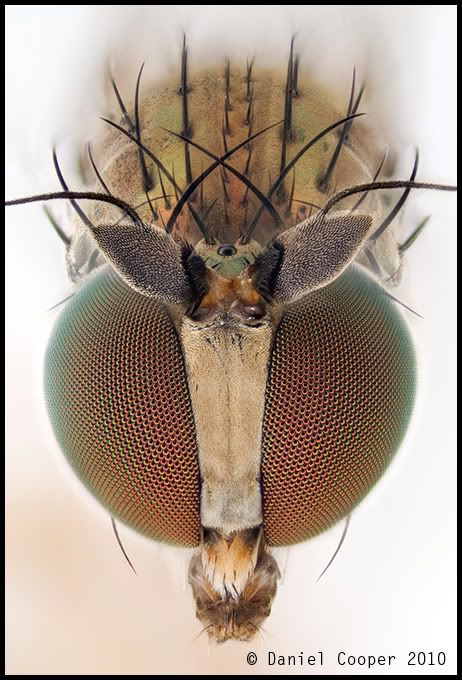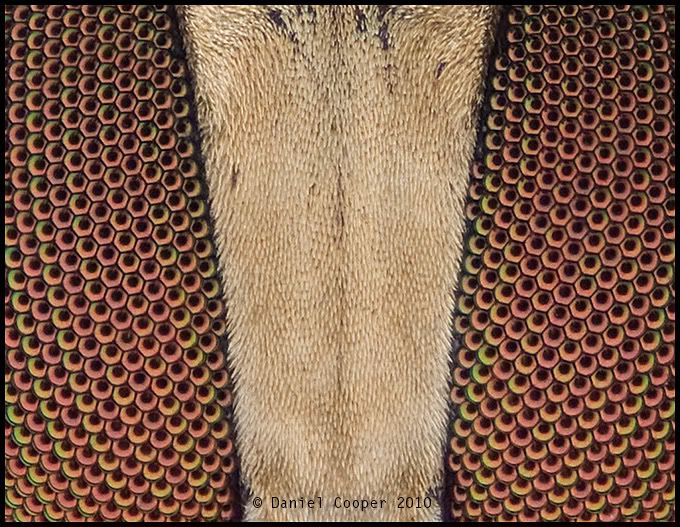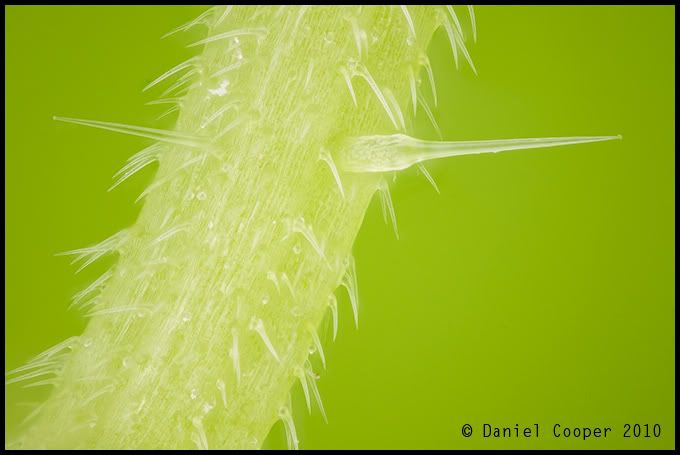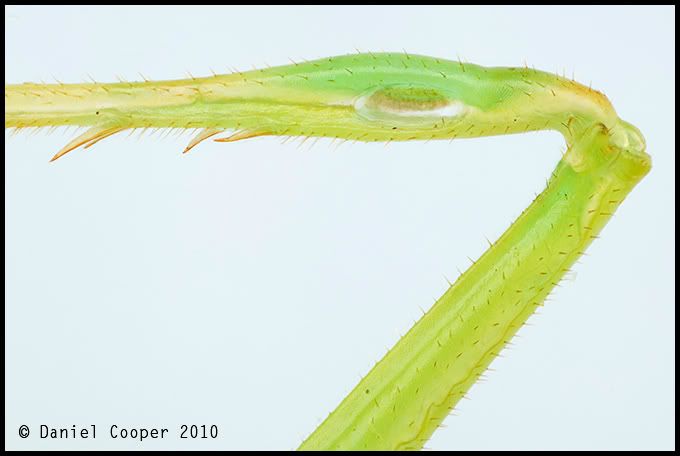This image is a stack of nearly 200 separate shots, taken with a Nikon Nikon N plan 10/0.30 objective.

The image seen below is a crop of the image above, it clearly shows the hexagonal ommatidia. Insect eyes function quite differently from our own and they produce an image which lacks detail. The main function of the insect eye is not to produce an image, but to detect movement. Ommatidia are well adapted to this function, they only detect light that passes through a very narrow angle. This means that any movement of an object in front of the eyes is easily detected through a change in the pattern of light detection in the many ommatidia across the eye surface.
What looks a little like a pupil in each ommatidium is just a reflection of the microscope objective.









